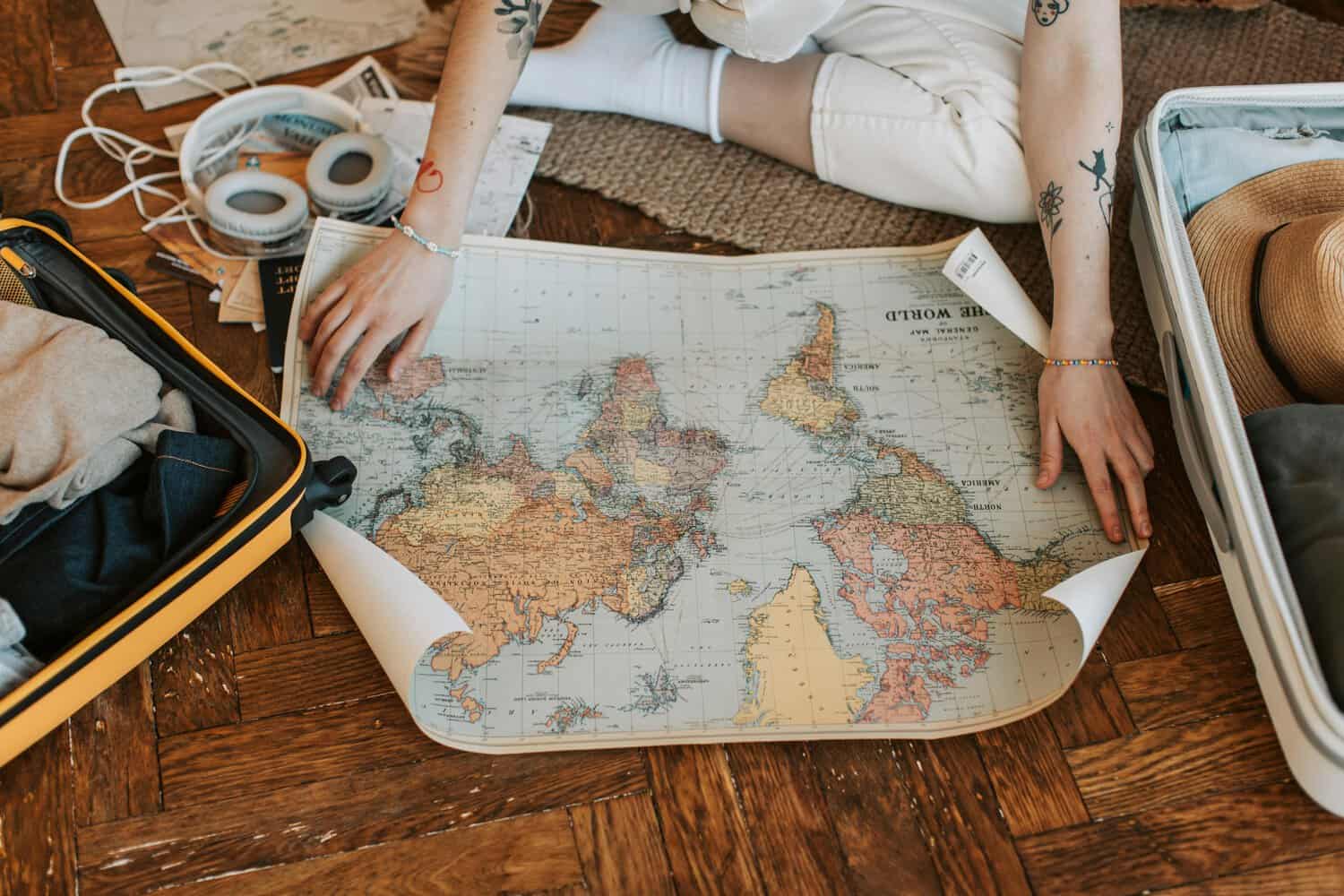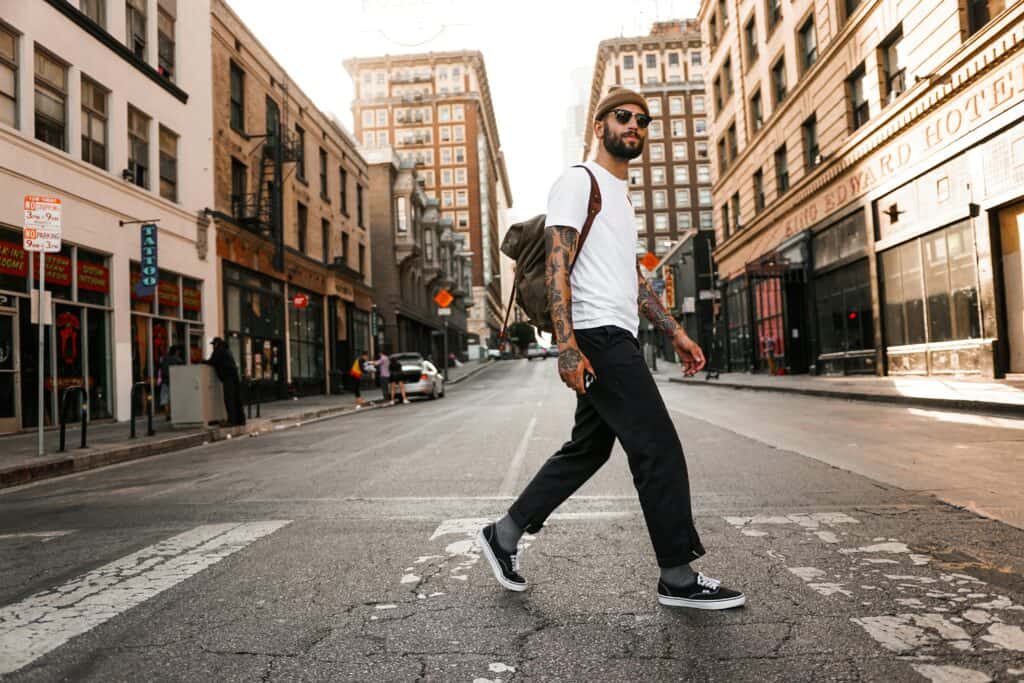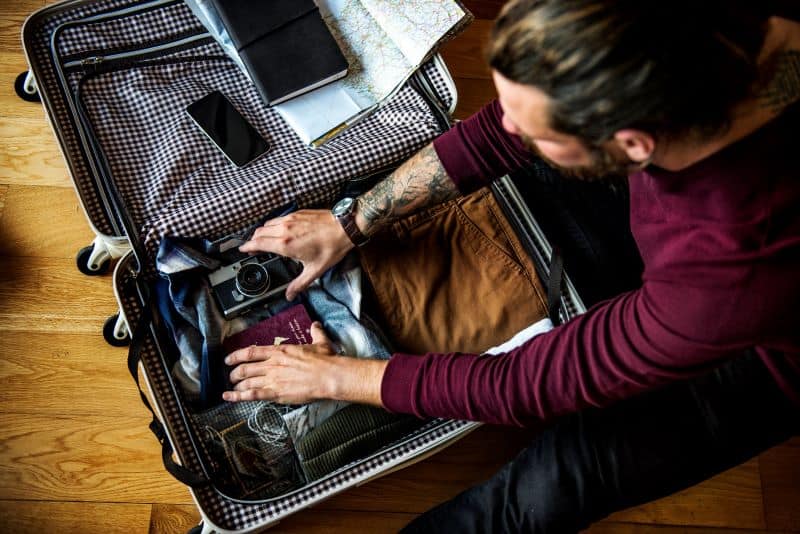Summer vacation season is quickly approaching, and just under half of Americans are planning trips in the coming months. This post explores how to manage travel anxiety, which triggers a complex web of worries for many.
If you find yourself counting down to your vacation with dread rather than excitement, you’re not alone; in fact, research has shown that about 18% of U.S. adults have travel anxiety. Behind this phenomenon are evidence-backed neurological underpinnings. A 2022 Cornell University study demonstrated increased amygdala activity—the brain’s fear center—for people in the middle of travel planning. This anxiety can manifest as fear of flying, apprehension about unfamiliar surroundings, separation anxiety from home, or health concerns while traveling.
Vivian Chung Easton, a mental health clinician at Blueprint, a therapist enablement technology platform explains that, “while travel anxiety exists on a spectrum from slight uneasiness to debilitating fear that prevents travel altogether—there are ways to significantly reduce these feelings at every stage of your trip.” Let’s explore how to manage travel anxiety and build your own mental health tool kit for more peaceful travel experiences.

Pre-trip: Plan with mental health in mind
Ensuring anxiety-free travel begins weeks before departure. Research shows that preparation should include intentional mental health provisions alongside booking accommodations and planning activities.
- Digital tools like meditation apps have proven remarkably effective. In fact, a study reported a 34% reduction in travel stress among users who complete pre-trip meditation sessions—some apps even offer guided visualizations of common travel scenarios.
- If you take medication for mental health conditions, consult your healthcare provider well before departure for guidance on time zone adjustments and prescription refills.
- Build flexibility into your itinerary. A striking 72% of travelers who create detailed but adaptable itineraries report lower anxiety levels than those with either no plans or highly rigid schedules.
- Compile all your trip information so it’s ready to go. This includes any flights, hotels, reservations or activities booked all in one place to ensure you have all your information easily accessible. You can also think about and identify when your anxiety spikes: Is it the drive? Being in line? Boarding the plane? Once you’ve pinpointed what’s causing you to feel anxious, you can plan around them and make sure those peaks are prepared for so you can manage them in the moment.

During travel: Useful grounding exercises
The journey itself—whether by plane, train, or car—often represents peak anxiety for travelers. Fortunately there are several science-backed techniques that can help you stay grounded.
- For flight anxiety, controlled breathing exercises show remarkable effectiveness. The 4-7-8 technique (inhale for 4 counts, hold for 7, exhale for 8) activates the parasympathetic nervous system, counteracting the fight-or-flight response that anxiety triggers. Practice this technique before your flight and implement it during takeoff or turbulence.
- Regardless of transportation, when anxiety spikes the 5-4-3-2-1 sensory grounding technique can reduce acute anxiety by up to 47%, according to clinical studies by the This technique involves listing:
- 5 things you can see
- 4 things you can touch
- 3 things you can hear
- 2 things you can smell
- 1 thing you can taste
Creating a sensory comfort kit can enhance this practice—pack a small bag with items that engage your senses in calming ways: perhaps hand lotion (smell), a small fidget toy (touch), favorite music (hearing), photos of loved ones (sight), and a piece of candy or gum (taste). Something interesting to note is that things with intense flavors (like a super sour candy) shocks your senses and reminds you to focus just on that instead of other things.
- Progressive muscle relaxation—tensing and releasing muscle groups sequentially—reduces physiological symptoms of travel anxiety by 53% according to recent studies. Try starting at the top and tense your face, then move down to your neck, and then all the way down to your feet. This helps bring awareness back to your body, and helps reengage.
At your destination: Maintaining mental equilibrium
Arriving at your destination doesn’t necessarily mean anxiety disappears. Unfamiliar surroundings, different cultural norms, and the pressure to “have fun” can create new stress. However, there are a few ways to create a bit of stability that can help ease that anxiety.
- Traveling doesn’t have to uproot every part of your daily schedule, some of your core nonnegotiables can still be in place. Establish a modified version of your home mental health routine for crucial stability. If you normally start your day with journaling or taking a minute for yourself while having coffee, even five minutes of familiar ritual can anchor your day. If you’re traveling with anyone else, be sure to set clear expectations for what parts of your routine you’d prefer to keep up with. If a morning walk grounds you, prioritize it—and communicate that need clearly.
- There might be pressure to maximize every minute of a trip, which often results in over-scheduling, exhaustion, and heightened anxiety. Build in decompression time after busy sightseeing days—try returning to your accommodation mid-afternoon to rest before evening activities.
- Align with any travel partners on must-dos and things you’d just like to do. When time’s tight, shared priorities help everyone agree on what matters most—and what can be skipped. Revisit the list during your trip to keep everyone aligned and ensure a fun, smooth experience.
- Perhaps most importantly, have contingency plans in place for unexpected changes. Develop basic “if-then” plans for common travel disruptions. The Cleveland Clinic found that travelers who develop basic “if-then” plans for common travel disruptions (delayed flights, lost items, minor health issues) experience 60% fewer panic responses when these situations arise. Simply knowing you have a backup plan allows your nervous system to relax.
Coming home: The often overlooked phase
Travel anxiety isn’t just about the trip—coming home and resuming daily life deserves just as much care. Post-travel depression is clinically recognized and affects approximately 21% of travelers, potentially lasting up to two weeks after returning from vacation. To help your brain readjust back to day-to-day life, try:
- Gradual reintegration techniques can ease this transition. If it’s available to you, take one “buffer day” at home before returning to work. A Wall Street Journal report found taking an extra day reduces re-entry anxiety by 47%.
- Use buffer time to unpack, recharge, and reflect—journal or share stories to process the journey. These moments also offer space to review what worked—and what didn’t—in your approach to how to manage travel anxiety for next time.
Finding growth through discomfort
What makes travel uniquely valuable is its paradoxical nature—it’s both anxiety-provoking and anxiety-reducing. It stretches our comfort zones in ways daily life rarely does. By navigating unfamiliar situations successfully, we build confidence that transfers to other areas of life.
Building your personalized travel mental health tool kit takes time and experimentation. Not every technique will work for every person, and different trips may require different approaches. The goal isn’t zero anxiety, but keeping it from overpowering the joy and wonder of discovery.
As you prepare for summer travels, remember that mental preparation deserves space on your packing list. How to manage travel anxiety isn’t just about surviving your trip—it’s about transforming it into something joyful, empowering, and deeply meaningful. Safe travels!
This article was originally produced by Blueprint and distributed by Stacker.com. It has been edited by the fagabond team for fagabond.com.







